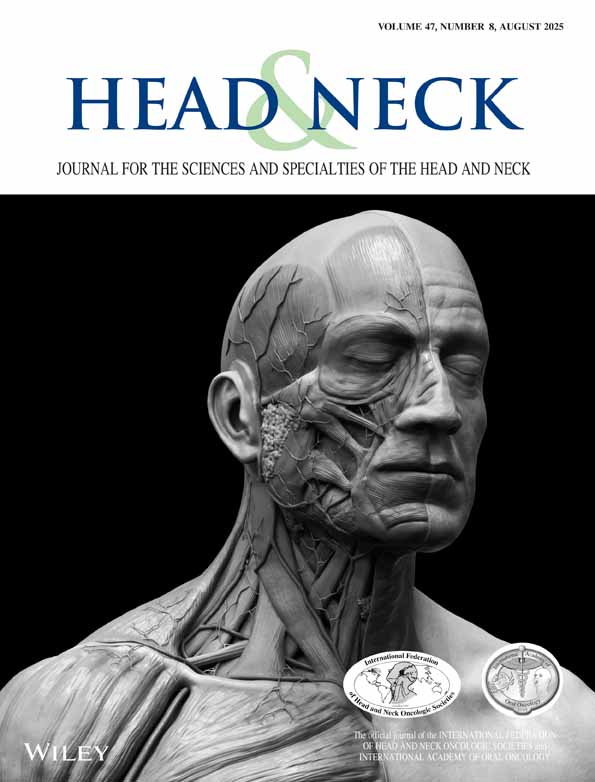Salvage laryngectomy and pharyngocutaneous fistulae after primary radiotherapy for head and neck cancer: A national survey from DAHANCA
Abstract
Objective.
In 1998, the Danish Society for Head and Neck Oncology decided to conduct a nationwide survey at the five head and neck oncology centers with the aim of evaluating the surgical outcome of salvage laryngectomy after radiotherapy with special emphasis on identifying factors that could contribute to the development of pharyngocutaneous fistulae.
Patients.
A total of 472 consecutive patients undergoing postirradiation salvage laryngectomy in the period July 1, 1987–June 30, 1997 were recorded at the five head and neck oncology centers in Denmark. Age ranged from 36 to 84 years, median 63 years, 405 men and 67 women. Primary tumor site was glottic larynx (n = 242), supraglottic larynx (n = 149), other larynx (n = 45), pharynx (n = 27), and other (n = 9). All patients had received prior radiotherapy.
Results.
Median time between radiotherapy and laryngectomy was 10 months (range, 1–348 months). A total of 89 fistulae lasting at least 2 weeks were observed, corresponding to an overall average fistulae risk of 19%. The number of performed laryngectomies per year decreased linearly (from 58 to 37), whereas the annual number of fistulae increased slightly (from 7 to 11), which meant that the corresponding estimated fistulae risk increased significantly from 12% in 1987 to 30% in 1997. Other significant risk factors for fistulae in univariate analysis included younger patient age, primary advanced T and N stage, nonglottic primary site, resection of hyoid bone, high total radiation dose, and large radiation fields. Multiple logistic regression analysis of these parameters suggested that nonglottic tumor site, late laryngectomy period (1987–1992 vs 1993–1997), and advanced initial T stage were independent prognostic factors for fistulae risk. Surgical parameters like resection of thyroid/tongue base/trachea or radiotherapy parameters like overall treatment time or fractions per week did not influence fistulae risk.
Conclusions.
The risk of fistulae is especially high in patients initially treated with radiotherapy for nonglottic advanced stage tumors. A significant decrease in the number of performed salvage laryngectomies over the 10 years was seen. Over the same time period, the annual number of fistulae remained almost constant. The resulting more than doubling of fistulae rate could thus in part be explained by less surgical routine. © 2003 Wiley Periodicals, Inc. Head Neck 25: 711–716, 2003




